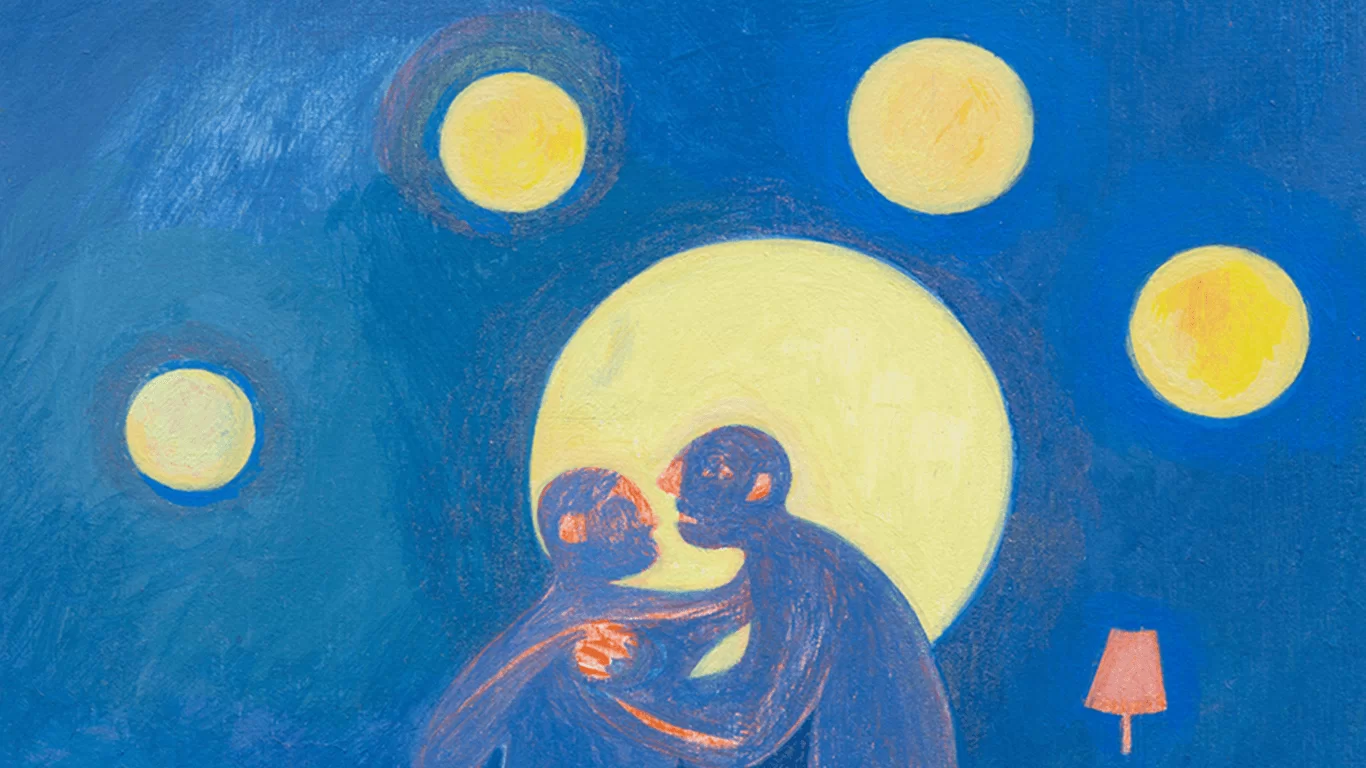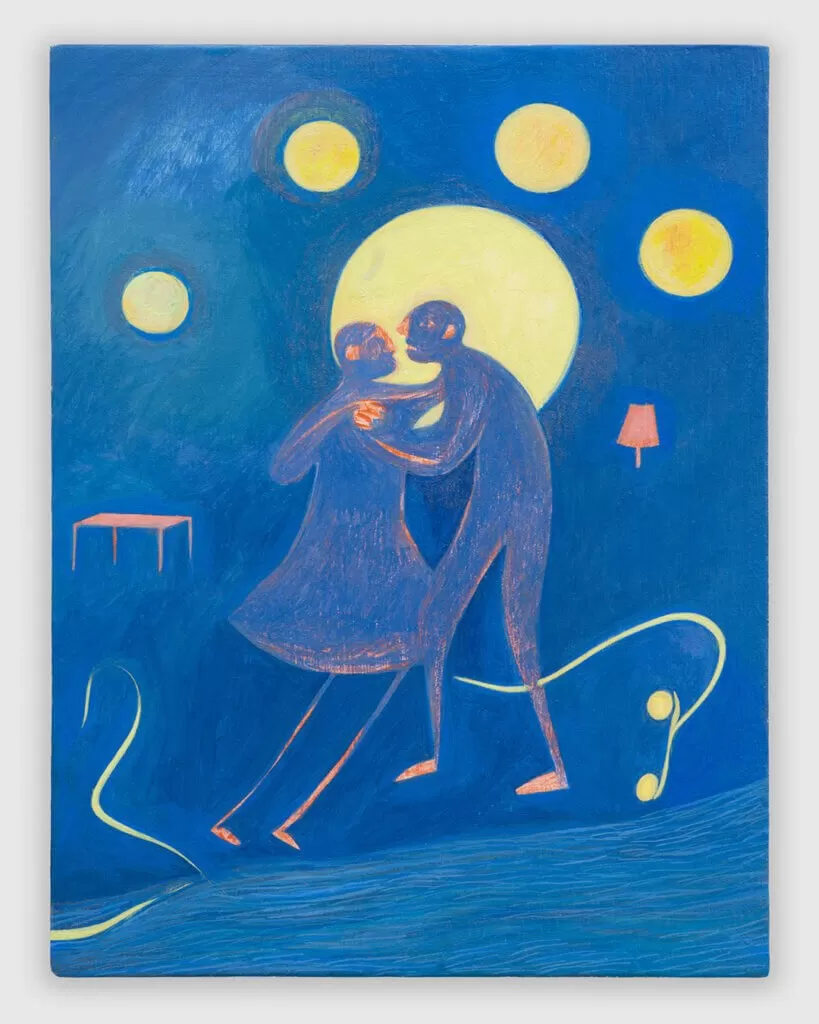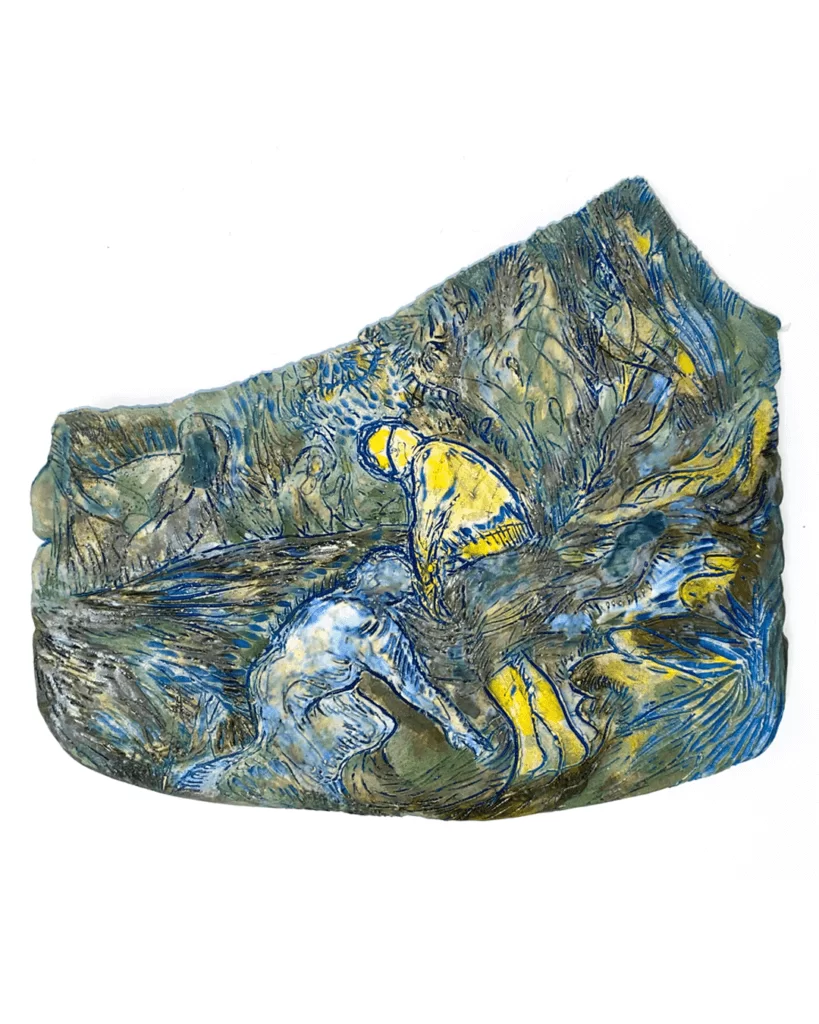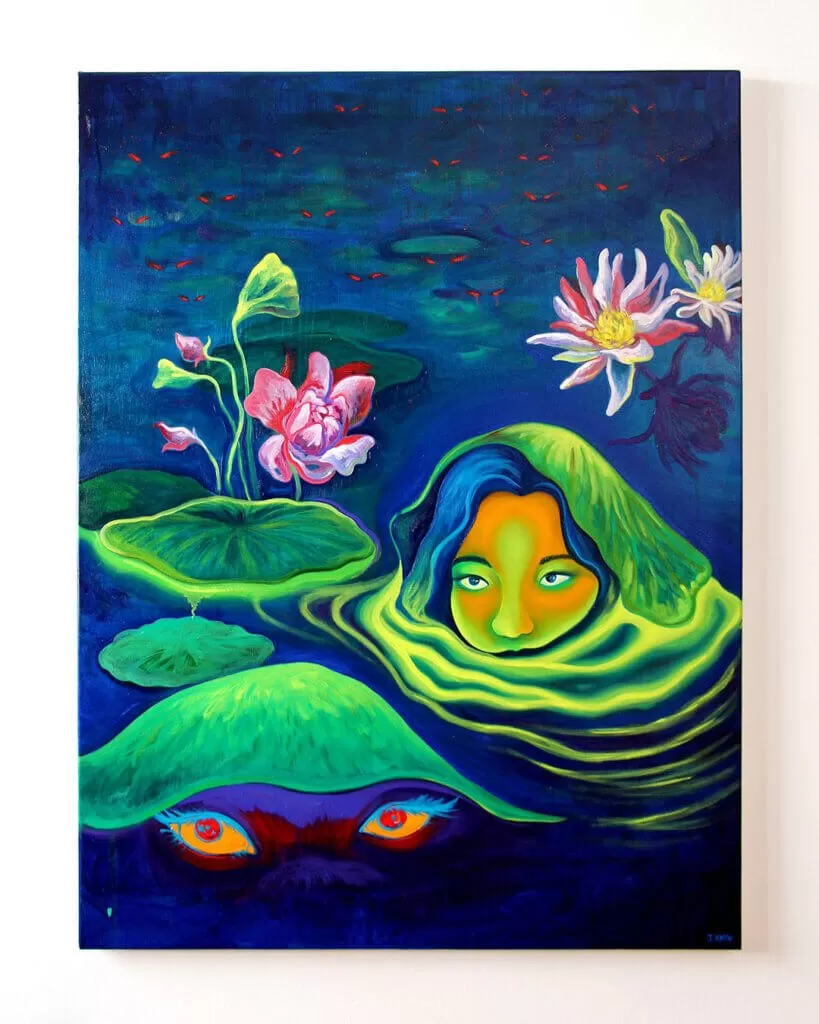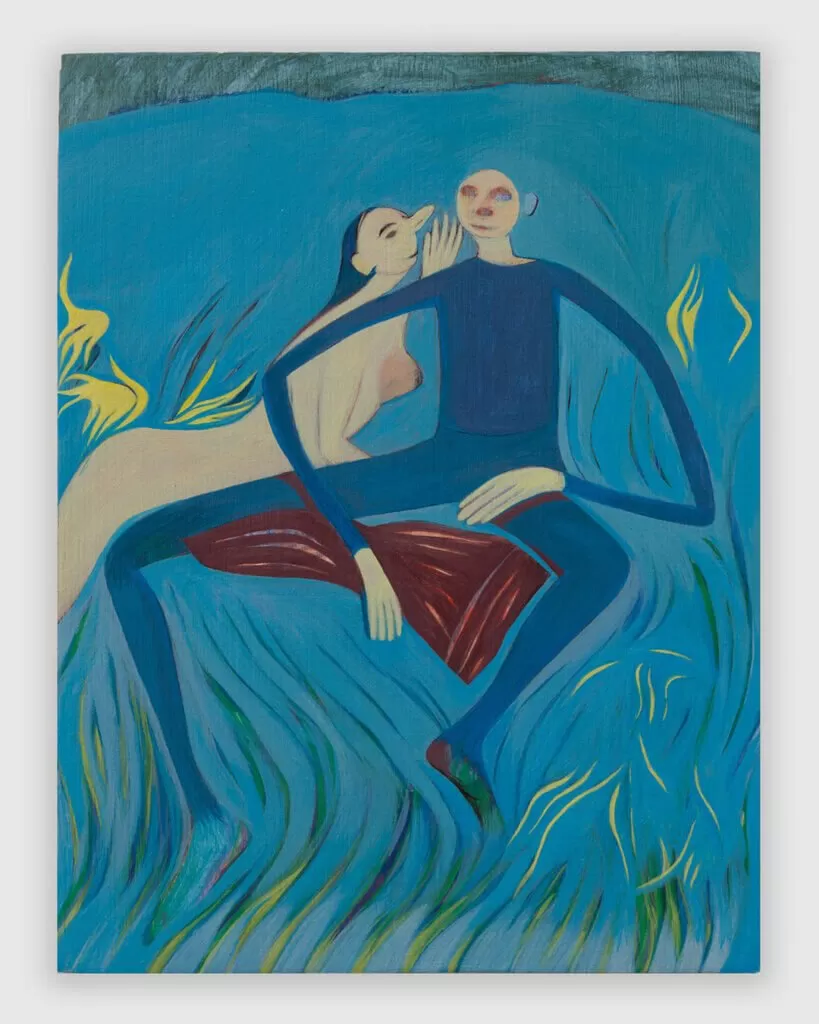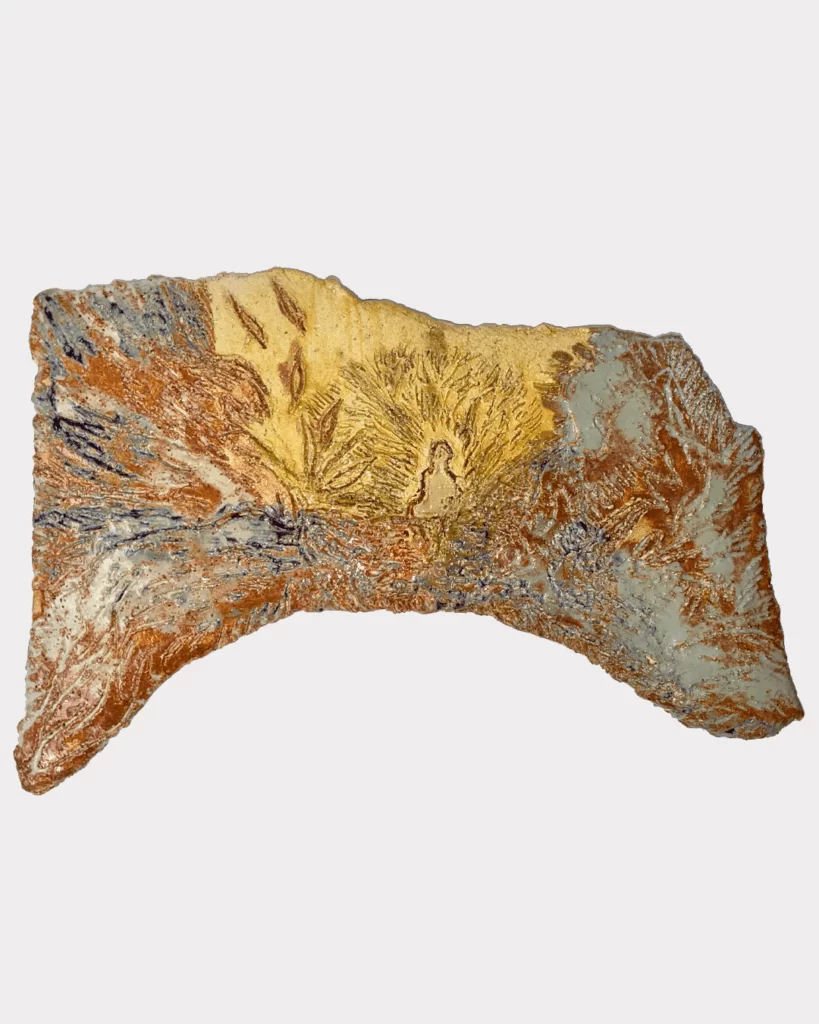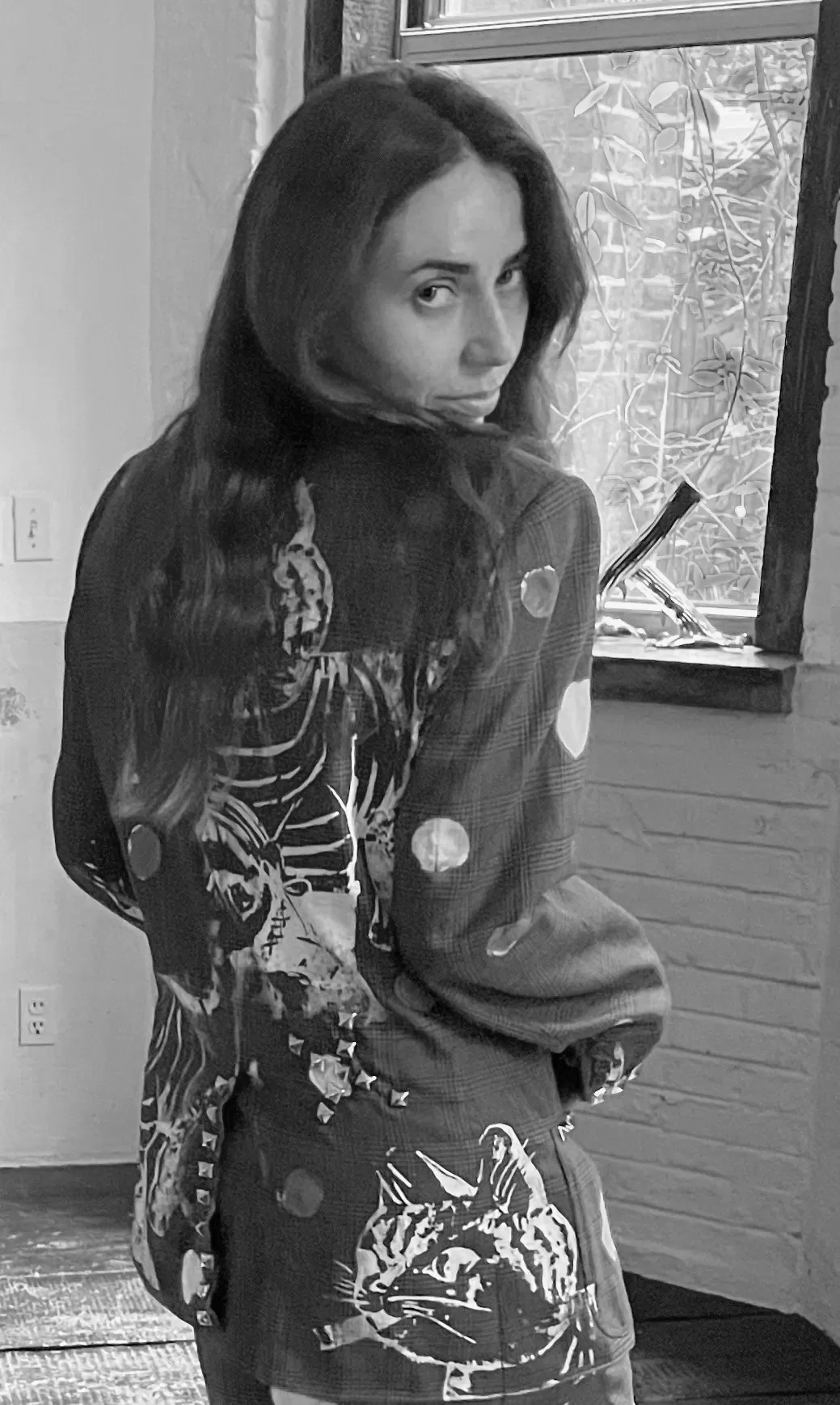JAQUELINE CEDAR, JEANNIE RHYU & ERICA MAO CURATED BY HAYLEY RIGBY
Scenographies of the Mind: Beyond Magical Realism
March 31 – April 23, 2022
Shin Gallery
68 Orchard St, New York
Jaqueline Cedar, Erica Mao and Jeannie Rhyu cast Scenographies of the Mind: Beyond Magical Realism, an all women’s exhibition curated by Hayley Rigby for Shin Gallery’s project space.
Considering the dissonance and grandeur that many aspects of magical realism carry, these three artists have painted and sculpted works that seduce with incredible stupor, inviting viewers into their own visualised and delusional day-dreams. Realised in paint in the case for Cedar and Rhyu, and soaked into Mao’s ceramics, the works in the show are packed with stylised hallucinations, and host a strong precariousness by way of each composition’s surrealistic, yet identifiable characteristics.
All three bodies of work in Scenographies of the Mind are narrative heavy, and allure audiences into a type of precautious, yet guided, fantasy. In an attempt to understand the show’s modes of mystique, I asked Jaqueline Cedar, Jeannie Rhyu and Erica Mao a series of questions relating to their own perspectives on magical realism, their broader studio practice, and the significance of each other’s exhibited works.
Clare Gemima: Scenographies of the Mind: Beyond Magical Realism was on show at the same time as Amalgamation: Celebrating 10 Years of Shin Gallery. Works by Egon Schiele, Tracey Emin, and David Hockney are all included in the show, amongst many other globally established artists. Do you feel as though these two shows were in conversation with each other historically or maybe conceptually? I am curious to understand how Amalgamation resonated personally for each of you.
Jaqueline Cedar: For me, the most alluring connection between the two exhibitions was located in the playful quality of both installations, and the sensitivity to texture and line/material. I found some of my old favorites in what I’ve been referring to as the drawing section of the exhibition – James Castle, Bill Traylor, Marisol Escobar, Henry Moore, and I was pleased to discover some new artists as well. Leaning up against a stack of books and casually placed on a table in the apartment section of the show, Elisa Martins da Silveira’s paintings are colorful quiet gems.
Having started my own apartment gallery just a couple of years ago, I feel connected to a desire to make looking at art a casual and comfortable affair, and I am always excited by an exhibition that draws on our inclination to stay longer with a work and live with it. The couch and easels downstairs at Shin Haus lean toward this home/studio experience and encourage slower looking. Erica’s ceramics are placed high and low on a column and glass coffee table. The salon installation upstairs (especially the edge to edge frame display) creates pause and staccato movement for viewers from one work to the next. Shin’s taste is solid and eclectic and I was thrilled for our works to be set in conversation with his anniversary exhibition.
Erica Mao: It’s hard to parse out a singular historical or conceptual connection between the two shows, as Amalgamation includes such a variety of artists from all around the world, across hundreds of years of history. The curation and exhibition design of the show was quite interesting to me. Looking at old master’s drawings and 20th century paintings and sculptures (usually found in historical and cultural institutions), in a Lower East Side gallery situated on a bustling downtown street gave me a funny sense of cognitive dissonance. I recognized the art objects as important relics and markers of history, and also recognized the gallery itself as a commercial space for contemporary art and objects. How does one come to terms with this estrangement between object and setting? This is not unlike the feeling one would experience immersed in Scenographies of the Mind downstairs – a strange
recognition of familiar objects and people, but without an understanding of what kind of environment they’ve been placed in.
Jeannie Rhyu: I’m honored to have shown my paintings alongside iconic artists like Gustav Klimt, Francois Boucher, Tracey Emin, and David Hockney whose art I’ve been inspired by since learning about them as a student. I hope that the viewers who look at my art feel as excited as I do when I stand in front of Klimt’s work, imagining the blue crayon in his hands trace the softness of skin and the crinkles of cloth.
Clare Gemima:: How do you interpret magical realism, or beyond it? Who are the most historically prominent artists that you think of when considering this art movement?
Jaqueline Cedar: My understanding of magical realism bleeds over into surrealism, and I often think of Leonora Carrington, Dorothea Tanning, and Remedios Varo as great influences. Paul Cadmus and George Tucker are also favorites who I’ve been lucky to spend a lot of time with in person while teaching at the Whitney Museum. I take cues from a combination of daily observations and dream space in my own work, and I’m interested in blurring lines between concrete reality and an emotional or atmospheric response to experience.
Erica Mao: I interpret it as a lens in which the viewer can understand where they are situated within the work. The ‘realism’ makes itself evident in recognizable figures and objects, even, as an example, a horizon line that marks where the viewer’s center of gravity is. But the magical part is where the viewer can let themselves float into the clouds and bend the rules of what is possible within this world. How do these two considerations work together to drive home the feeling or idea of the work… Do they combine to create clever metaphors or analogies, or are they used as a smokescreen to conceal what the work is actually about?
Jeannie Rhyu: I want to create art that feels magical, fantastic, and familiar – all at the same time. I am equally inspired by the enchantments of magical realism and the dream-like worlds of surrealism. I find inspiration in my unconscious mind as I revisit my experiences in my daydreams and nightmares. When I paint, I work to bring this to life in a magical-realist idiom where I accentuate the fantastic moments that already exist in this world.
The recognizable, but amplified and distorted visual elements in my paintings go beyond the limits of magical realism, and verge on the surreal to materialize, and realize the emotions and energies behind the art. One of the most historically prominent artists I think of in relation to magical realism is Frida Khalo. Her raw and honest self-portraits always blow my mind. I also love Peter Doig and his brilliant colors and spirited trees.
Clare Gemima: Before being approached to be part of Scenographies of the Mind: Beyond Magical Realism, were any of you familiar with each other’s work? What have you learnt about your own paintings and sculpture by working alongside your co-exhibitors?
Jaqueline Cedar: I was a fan of both Erica Mao and Jeannie Rhyu’s work prior to the exhibition, and Jeannie and I had recently exhibited in adjacent spaces in a group exhibition organized by Field Projects in Bushwick. I’m always inspired by artist peers and find myself excited to get back to work every time I experience a new body of art in person. The quality of light and space in Jeannie’s paintings glow in an eerie way I find totally engrossing and Erica’s ceramics have gotten me thinking about line and texture and 2D/3D conversations that I hope to explore at some point in the future. I think our content is most connected through the figure, and it’s really fascinating to see how manner and technique can shift perception of narrative and space from one artist to the next.
Erica Mao: I was aware of Jaqueline’s paintings and curatorial practice beforehand, but Jeannie’s work was new to me. Group shows are great because it always feels more interesting and pertinent when work is placed within a conversation. In this case, I feel like the show was a peek into all of our inner worlds.
Jeannie Rhyu: Prior to Scenographies of the Mind, I had a couple of group shows with Jaqueline Cedar. This is my first time meeting Erica Mao.
Clare Gemima: If you could choose out of one another’s works, what would the strongest piece in the show be to you, and why?
Jaqueline Cedar: I was totally transfixed by Erica’s sculpted forms, especially the one that sat on top of a velvet green surface on top of a low glass table. I loved seeing the way the colors of the glaze melted over the hand-pressed form, and created contrast with all of the other surfaces in the room.
Erica Mao: I’m drawn towards Jaqueline’s paintings, especially When I Come Home (2022) and Walk In (2022). Both of these works have such a great tension and atmosphere to them. It makes me wonder what kind of situation is happening, especially in When I Come Home, with the lone hand that enters from the left, and the horse’s head that enters from the right, intersecting with the grass that forms an amorphous, abstract block.
Jeannie Rhyu: I really like the intimate preciousness of Jaqueline’s small paintings on wood. I want to hold them in my hands. As for Erica’s ceramic sculptures, I appreciate the broad range of textures shown within one vessel.
Jaqueline Cedar:
Clare Gemima: Your work explores figures, landscapes, exploration, curiosity, nature and animals. There’s also light probing into ideas of domesticity, intimacy and relationships with self and others. Where are you extracting the most influence from before you start painting in your studio? What are the most recurring themes in your practice and why are they significant?
Jaqueline Cedar: More and more I find myself returning to personal experience. Looking inward and trying to recall memory, dreams, light, place, and feeling have been the primary focus as of late. I think your phrasing around intimacy and relationships between self and others rings most true. I often lean into pausing on human connections between people or natural forms. I see body and movement as prime influences and try to pay close attention to the way things touch or come close to touching. There’s something about this act of reflection or mirroring of self that seems to allow or encourage feeling and I’m interested in sharing this kind of experience.
Clare Gemima: Your work consists of 8 small acrylic painted panels that hang side by side, reminiscent of a story-board without text. This body of work could be seen as one finished piece or an eight part series. Are viewers encouraged to seek subliminal narratives from consuming the work sequentially, or should each work be considered individual? Can you explain the intention behind your installation choice?
Jaqueline Cedar: I think of each work as individual, but I imagine it’s challenging to avoid reading a narrative into this kind of display and I wouldn’t discourage it. Hayley Rigby – our curator – organized the sequence for this show, and I was happy for her to play with the arrangement. It’s so nice to collaborate with folks in presenting work and allow for chance in the way their presentation shifts the meaning of each image. I love being part of group exhibits because each installation changes the way I view my own works through the lens of the curator or in dialogue with other artists. I made these eight paintings during a visit with my family in Los Angeles earlier this year, so they are definitely connected in their new range of visual influences. I spend the majority of time on the west coast in nature – hiking, near the ocean.
Their beginnings are personal in their reflections on the past and present, both in sleeping and waking life. One of the figures began as a rendering of a sculpture made by my grandmother. Another figure came from spending time with a book of objects from the Museum of International Folk Art in Santa Fe. One fence was observed on a hike. The floating head over the ocean started as a rendering from a dream of a person swimming through and trying to escape a flooded home. A tree I observed on a windy day was soon anthropomorphized. I imagined a female figure whispering in the seated sculpture’s ear. The sun grew a face. The longer I work on a painting the more the painting directs its finish, and I follow its lead in trying to resolve a conversation between image, light, and color. I imagine each work and its installation in conversation with the viewer will yield new meaning and narrative.
Erica Mao:
Clare Gemima: Your ceramic works in this show vary across different formats. Some are more conventional, autonomous pieces with an abstract-finished glaze, and your other works are organically shaped stonewares that hang like paintings. Can you explain the delineation between these two formats?
Erica Mao: Both of these forms operate the same to me in the way that they are both fragments of the world I am building. The more sculptural free standing work is reminiscent of natural elements I’ve seen in the wild before: rocky formations, gnarled trees, and murky tidepools. The flat ceramic wall pieces are almost like stone tablets carved with stories or scenes. This work materially operates like a bridge between my paintings and my ceramics. It explores the complexity of surface with glazing, but also the presence of physicality with the carving and marking of a clay object.
CG: Do you consider magical realism to be part of your general practice, say in your more landscape focused paintings? How do you incorporate ‘magic’ into your work, and do you think it offers visual reprieve from your own understanding of ‘reality’?
Erica Mao: I consider it part of my practice in a sense. Like I mentioned before, it becomes a mode of thinking that lends itself to the creation of the work. The magical part comes when the figuration and the abstraction of landscape start to blend together, the energy and spirit of the land imbue magic into the environment and, thereby, the experience.
Jeannie Rhyu:
Clare Gemima: Your work is extremely seductive, and considers the magic of memory. Inside of your enigmatic and detailed oil paintings, what can audiences understand through your established visual lexicon, and how does it reconstruct memories from your cultural heritage?
Jeannie Rhyu: The magic is working if you think my paintings are seductive. I constantly return to images of smoke, water, and clouds because I am interested in the ineffable and constantly changing quality of these natural elements. To me, they evoke something about the nature of the world and our experience in it, how a painting can be more true than reality when it perfectly captures the essence of our concepts. I was born in Seoul, South Korea, raised in Vancouver and Toronto, Canada, and have been living in New York City.
The things I grew up seeing in each of these places influence my imagery and my work. No matter where I am on the earth, I recognize the certain crisp freshness of air in the early morning after rain just stopped the night before. The sweetness of blooming flowers on a warm sunny day.
The specific saltiness of the ocean that you feel on the bottom of your feet. The light that shines through the trees, like a dream. I’ve been fortunate to call many places home, and I’ve begun to realize how these universal, indescribable experiences have helped me create a sense of home bound not to a physical location, but to feelings. I hope that everyone who looks at my art feels the pull of these experiences that connect each of us to the world around us.
Clare Gemima: Butterflies appear to be a recurring image in your practice, for example in your painting Red Moon Wishes (2022). What do the butterflies symbolize to you?
Jeannie Rhyu: Butterflies started appearing in my work because I love these graceful creatures, and I was particularly interested in their shimmering scales, as well as how they represent transformation and rebirth. There is something about their shape-shifting lifestyle that is very attractive to me.
The more they appear in my work, they have become something more than symbols of rebirth, like a representation of energy from loved ones, ancestors, nature, or the universe. Personally, I love how there are so many different varieties of butterfly. Some are fluffy and some have beautiful colors. I actually have started a taxidermy butterfly collection that I am planning on growing. It took me a while to find a sustainable source. When I went back home to Canada, I spent hours in a butterfly conservatory sitting as still as a rock so that the butterflies would sit on me.
©2022 Shin Gallery, Jaqueline Cedar, Erica Mao and Jeannie Rhyu


